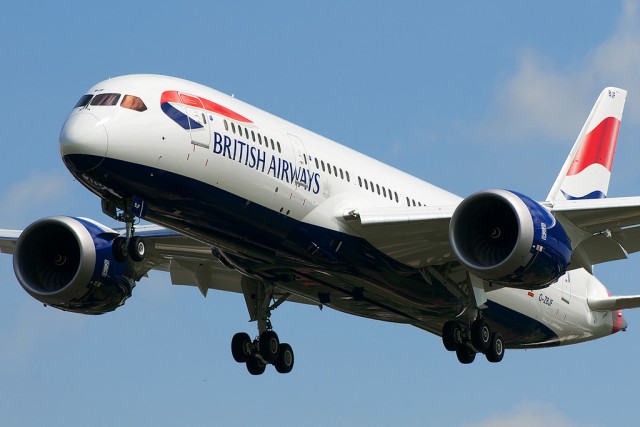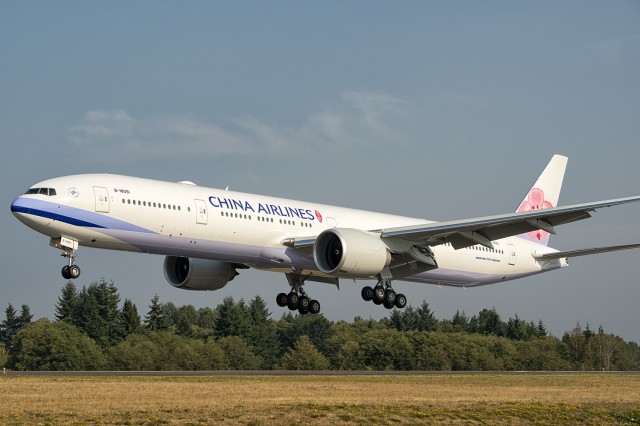People who love to fly don’t fly economy.
For the past several months, my husband has pitched the idea of AirlineReporter readers likely being interested in a trip report written by a ’œnormal person’ like me. In this case, ’œnormal’ is defined as someone who doesn’t choose flights based on the aircraft model, or speak in cabin class codes (e.g. Y, J, M, F). I am not an AvGeek and I am sort of proud of it (although I still love you all).
My husband and I fly together several times a year and, when we do, I am able to piggyback off of his status and occasionally get a free upgrade to business/first for domestic flights. However, the ’œopportunity’ for me to fly long-haul economy eventually arose when I needed to fly from Seattle to Hyderabad, India for work.
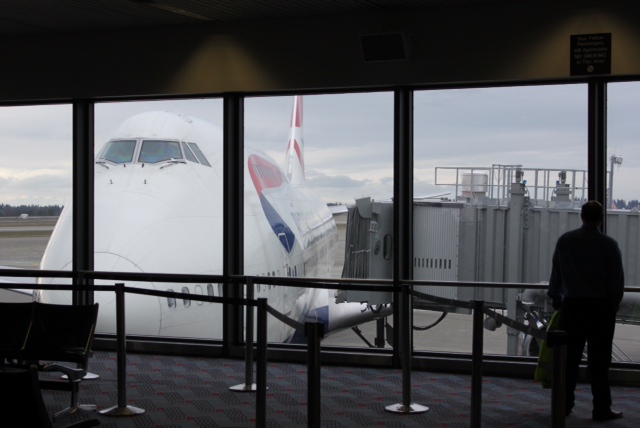
British Airways 747 seen at Seattle-Tacoma International Airport flying to London – Photo: Benjamin Whalen | AirlineReporter
To establish some context, I consider myself to be an experienced economy flier. Before meeting my husband and learning of the world of mileage runners and aviation geekdom, I had several flights between the US and Europe to visit distant relatives, as well as a semester studying abroad where I tried to fly to another city every other weekend. In all of these cases, I only ever flew economy, and have fond memories of being nestled under a blanket and binge-watching in-flight entertainment on a few good-length flights. Even though I didn’t pay much attention to the seat dimensions, I enjoyed flying and viewed it as a chance for peace, quiet, and self-reflection.
However, my flight to and from India was going to be much more rigorous than my previous travels. I had two back-to-back ten-hour flights in British Airways’ economy class, traveling from SEA>LHR>HYD. To top it off, I needed to do the reciprocal leg within five days of my arrival.
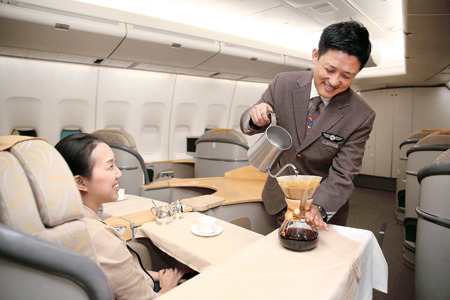
An Asiana Airlines senior purser makes hand dripped coffee during an onboard service Photo: Korea Times/Asiana Airlines
Like most people I know, I started my morning off with a good cup of coffee. I am not a fancy latte man; just a nice cup of black coffee does me well. While reading with my coffee the other day, I came across an article on Asiana from the Korea Times. The article talked about a new Hand-Drip Coffee service that is only on offer onboard Asiana Airlines in first class. You might be thinking ’œso what? Other airlines have espresso, why go for hand-drip?” Well, for someone like me, hand-drip coffee is pretty damn great.
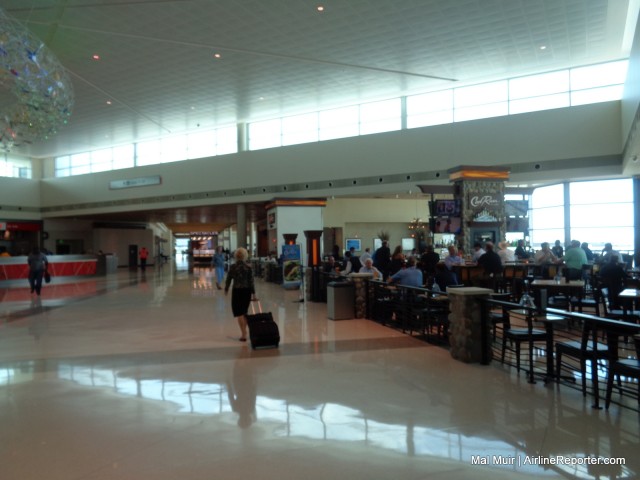
Dallas Love Field’s terminal area with restaurant and bar
In 1974, as Dallas/Fort Worth Airport opened to serve as the main regional airport and airlines moved their flights across town to the new facility, apart from one. Southwest AIrlines decided that their home at Love Field was the best way to service their customers, and from that moment on, the history of the airport would be tumultuous.
In 1979, the Wright Amendment, named after Fort Worth Congressman Jim Wright, set about restricting the airport to certain limitations. As the years went on, the amendment has had a number of changes, easing some of the restrictions.
The Wright Amendment originally restricted airlines with aircraft of greater than 56 seats to only fly services within Texas, or to the four neighboring states of New Mexico, Louisiana, Arkansas, and Oklahoma. Southwest expanded their services out to those states, but the amendment was a severe restriction on their ability to really become the airline that they wanted.
As the years went on, further changes were made, adding Alabama, Kansas, Mississippi, and eventually Missouri to the state list. The biggest changes came in 2006 though, when the repeal of the Wright Amendment began. Although the original changes in 2006 would allow through-ticketing (previously, if you wanted to fly say Dallas to Denver, you would need to have two separate tickets, one to get you to an intermediary city like Albuquerque or Kansas City, the other onto Denver). Eventually, in 2014, the 2006 amendment/repeal would allow long-haul flights directly out of Dallas Love Field.
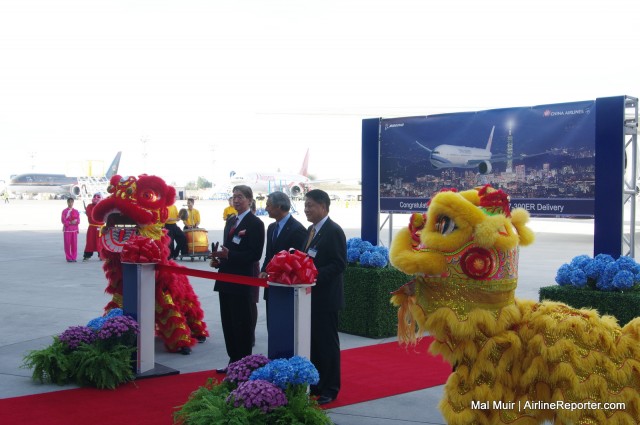
A ribbon cutting at Everett wouldn’t be complete without some dragons, right?
On a sunny Everett friday morning, press, dignitaries, and staff all gathered on the ramp outside the Everett Delivery Center. In front of us was a brand-new Boeing 777-300ER, a giant red ribbon, and two dragons. China Airlines is the newest carrier to receive this twin-jet, and since this was their first of the type, a large ceremony was called for.
China Airlines has been a Boeing customer for over half of a century. Their first Boeing aircraft was the 727, which entered them into the era of flying internationally within southeast Asia. Then, in 1970, they added the Boeing 707, which allowed them to begin transpacific flights to San Francisco.
Soon enough, they were expanding and other North American destinations were added. The airline grew, taking on 747s and, after the years passed, they had a fleet of 13 747-400s flying around the world.
In fact, they were the final customer of the 747-400 in its passenger form, taking delivery of that aircraft (B-18215) on the 26th of April, 2005. Fast-forward nine years later, and the airline is taking their newest Boeing aircraft, the 777-300ER.
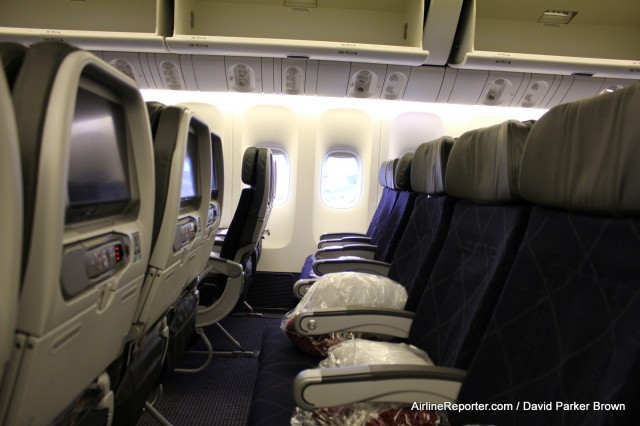
There is not a lot of room in economy to begin with, and reclining makes it worse
I am a non-recliner and I am not afraid to admit it.
What does that mean? It means that when I am flying economy (and sometimes in domestic first or a similar product), I just do not recline my seat – by choice.
I get that we are all given the “right” to recline our seats (otherwise, they wouldn’t put the button there, right?), but part of me just feels it is rude – so I don’t do it. I feel guilty every time I try to recline and wonder what I am doing to the passenger behind me. Am I smashing their laptop? Am I going to knock over a drink? Or am I going to make them roll their eyes and sigh?
Am I crazy here, or are there other non-recliners out there?
